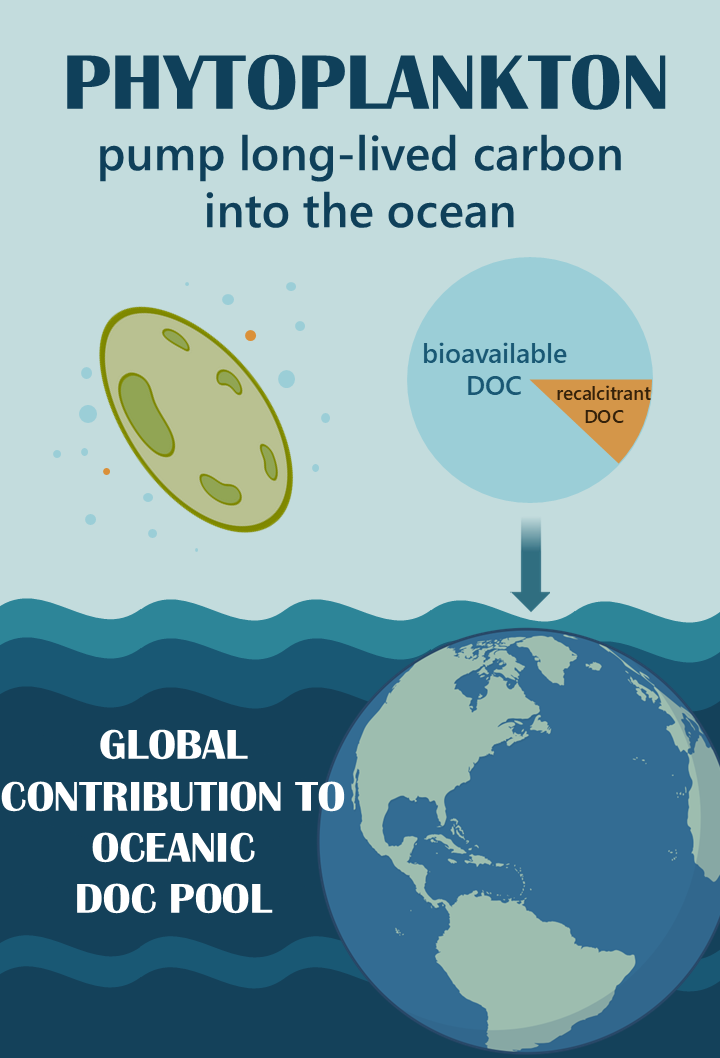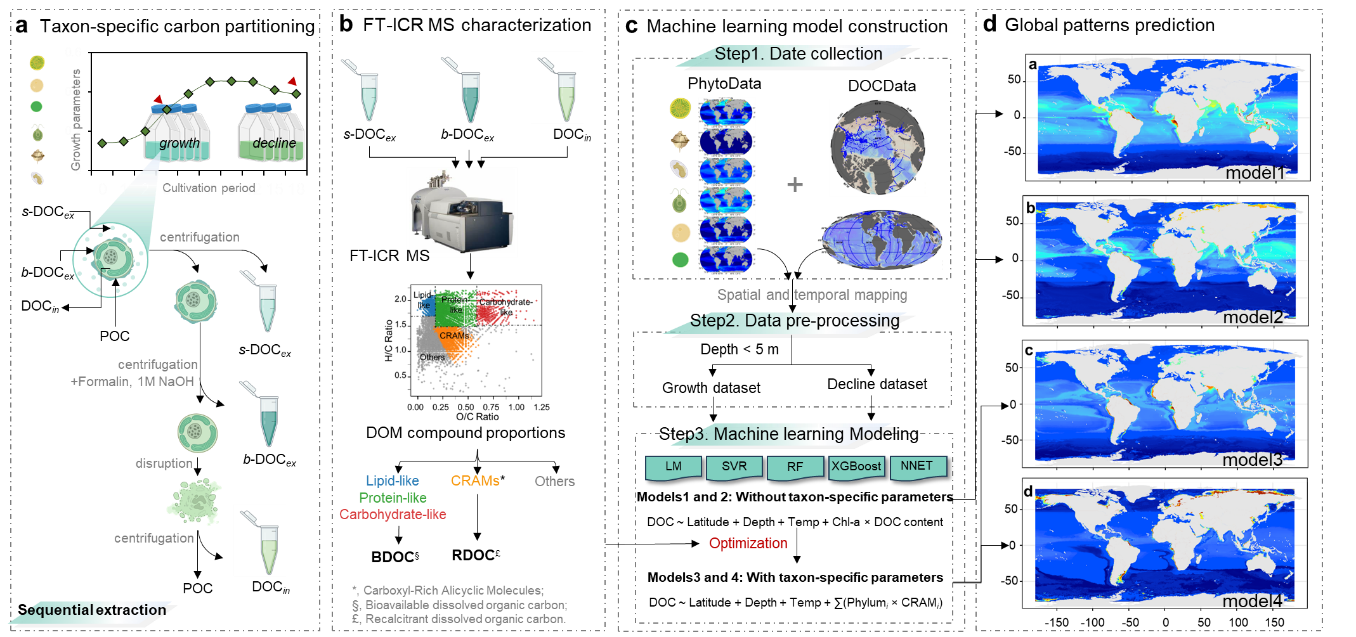Scientists discover how phytoplankton pump the global oceanic dissolved organic carbon pools
Phytoplankton, the microscopic algae that power ocean food webs, have always been cast as fleeting carbon players: they bloom, die, and their carbon quickly recycles. But a research team led by Prof. WANG Faming from the South China Botanical Garden of the Chinese Academy of Sciences, has discovered that these tiny organisms hold a surprising secret: they can directly pump stubborn carbon into the ocean, where it may linger for centuries. Using ultrahigh-resolution mass spectrometry, Dr. LU Zhe at the South China Botanical Garden, Chinese Academy of Sciences discovered that across six major phytoplankton groups, more than 10% of their carbon output takes the form of “recalcitrant dissolved organic carbon” (RDOC), a long-lived carbon reservoir. This challenges the traditional opinion that algal carbon is mostly short-lived. Published in Nature Communications on August 20, the findings reshape scientific understanding of phytoplankton-derived carbon and their role in structuring the oceanic carbon pool (Figure 1).
The DOC phytoplankton produce can take two distinct pathways: part of it is released as bioavailable dissolved organic carbon (BDOC), which is rapidly consumed by microorganisms and partially transformed into recalcitrant dissolved organic carbon (RDOC); at the same time, phytoplankton can also secrete RDOC directly. Whether generated through microbial transformation or direct exudation, RDOC ultimately plays a critical role in the long-term accumulation of the marine DOC pool. Thus, the molecular composition of algal-derived carbon is a key factor in regulating the size and stability of the global DOC reservoir. However, phytoplankton encompass a wide diversity of species, and their growth and decline occur over short timescales, making the partitioning of carbon highly variable across taxa and growing seasons. This variability poses significant challenges to uncovering the compositional characteristics of algal-derived DOC and its role in carbon cycling.
Addressing this scientific gap, the team has employed ultrahigh-resolution mass spectrometry to characterize the molecular composition of DOC across different phytoplankton groups and growth phases. By integrating these molecular insights with satellite remote sensing and machine learning models, the team has generated a global-scale dataset of marine DOC (Figure 2). They not only revealed the varying contributions of different phytoplankton groups to global marine DOC dynamics, but also discovered clear differences in algal-derived DOC across growth phases. For instance, phytoplankton blooms during the growth season produced significantly more RDOC than during the decline phase.
Dr. LU Zhe, the first author of this study, emphasized: “based on these global-scale dataset and our optimized oceanic DOC assessment models, we can accurately and efficiently anticipate how extended bloom durations or climate-driven shifts in phytoplankton community composition will shape the future dynamics of the ocean’s DOC reservoir.” Paper Link:(DOI : 10.1038/s41467-025-63105-x)

Figure 1. Cover image for this study.(Imaged by LU et al)

Figure 2. Schematic diagram of the technical route for this study.(Imaged by LU et al)
File Download: